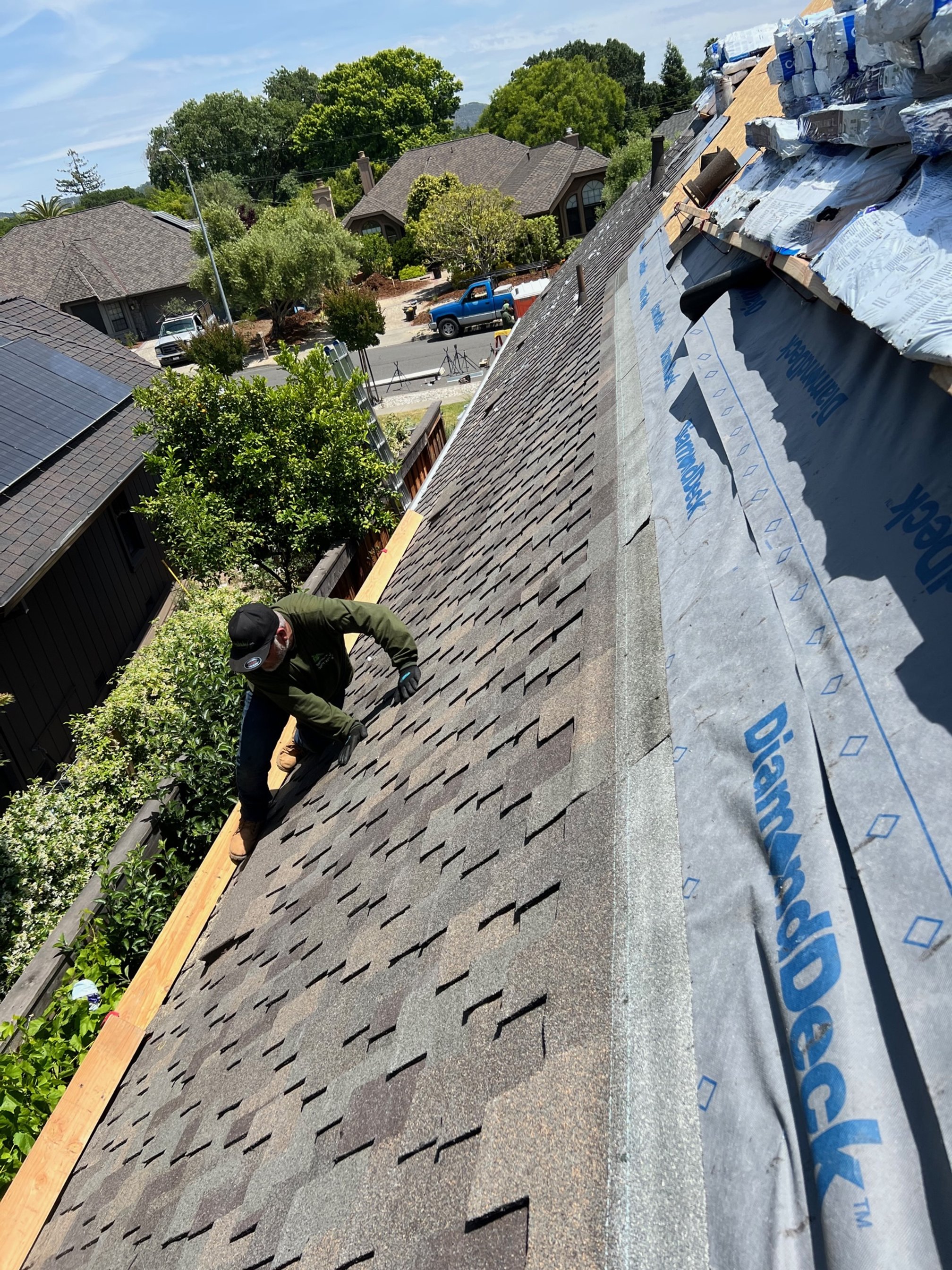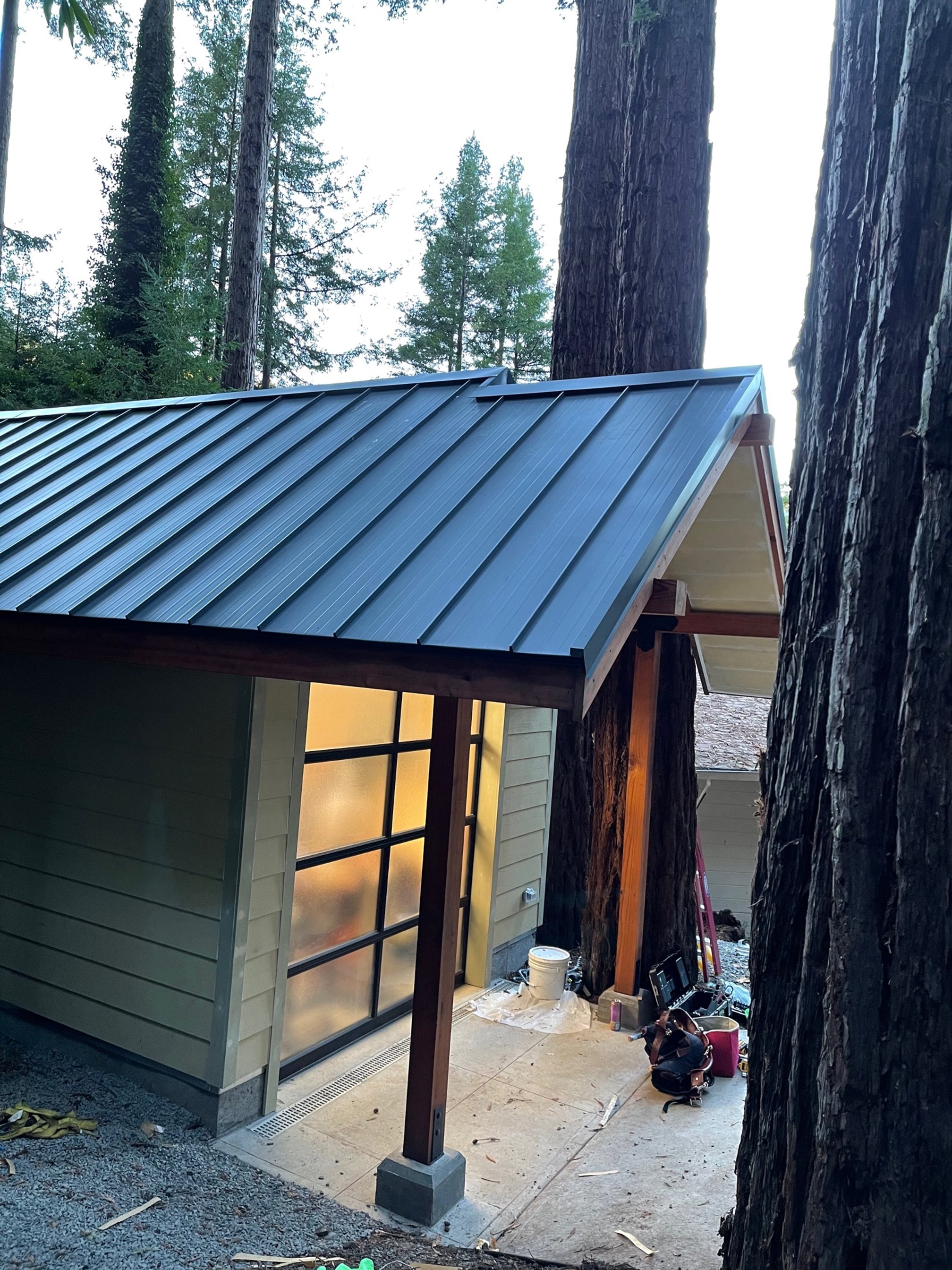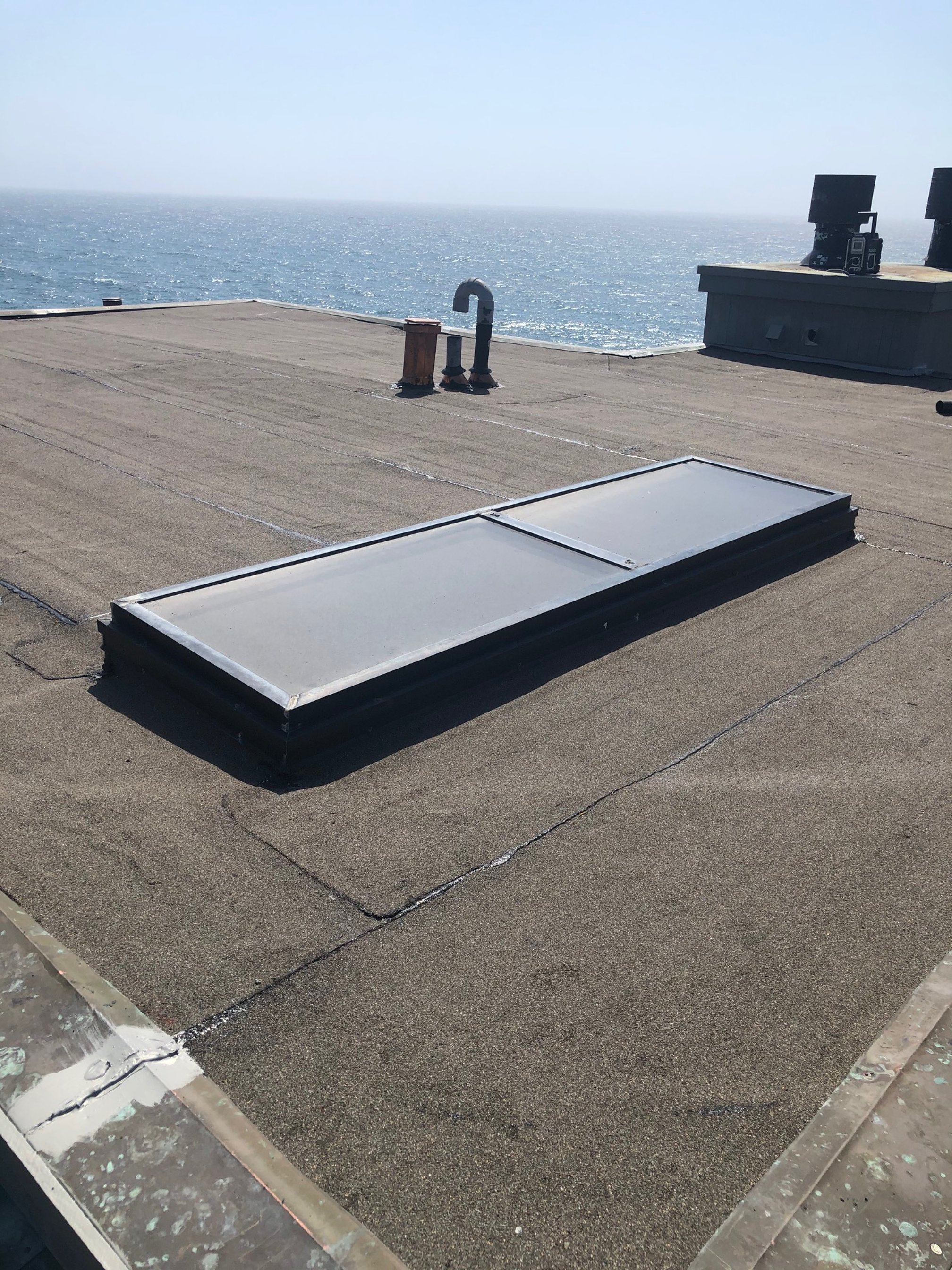Composition Shingle Roofs
An asphalt roof, also known as an asphalt shingle roof, is a common type of roofing material used in residential and commercial buildings. It is composed of individual shingles made from a combination of asphalt, fiberglass, and mineral granules. These shingles are designed to provide protection against weather elements, such as rain, sunlight, and wind.
Here's how an asphalt shingle roof typically works:
Shingles: Asphalt shingles are thin, flat pieces of material that are rectangular in shape. They are usually installed in overlapping rows on the roof's surface, creating a protective barrier.
Composition: The core of each shingle is made of fiberglass mat, which provides strength and stability. This mat is coated with asphalt to make it waterproof and provide flexibility.
Weather Resistance: The top surface of the shingles is covered with mineral granules. These granules serve multiple purposes, including protecting the shingles from the sun's UV rays, adding texture for better traction, and enhancing the overall aesthetic appeal of the roof.
Installation: Asphalt shingles are installed in layers, with each row overlapping the row below it. This overlapping design helps water flow down the roof without seeping into the structure. Nails are used to secure the shingles to the roof deck.
Asphalt shingle roofs are popular for several reasons:
Cost-Effective: They are relatively affordable compared to other roofing materials like metal, slate, or tile.
Ease of Installation: Asphalt shingles are relatively easy to install, making the installation process quicker and less labor-intensive.
Variety: They come in a wide range of colors and styles, allowing homeowners to choose a look that matches their aesthetic preferences.
Maintenance: While some maintenance may be required over time (such as replacing damaged shingles), asphalt roofs are generally low-maintenance.
Metal Roofs
Metal roofs offer a range of benefits that make them a popular choice for both residential and commercial buildings. Here are some of the key advantages of metal roofing:
Longevity and Durability: Metal roofs are known for their exceptional durability and long lifespan. When properly installed and maintained, metal roofs can last 50 years or more.
Weather Resistance: Metal roofs are highly resistant to various weather elements, including rain, snow, hail, wind, and extreme temperatures.
Low Maintenance: Metal roofs require minimal maintenance. They do not require regular inspections, repairs, or treatments like some other roofing materials. Occasional cleaning and inspection are usually sufficient.
Fire Resistance: Metal is a non-combustible material, making metal roofs highly resistant to fire.
Energy Efficiency: Metal roofs can reflect a significant portion of the sun's rays, reducing heat absorption and helping to keep the building cooler.
Environmental Benefits: Many metal roofing materials are recyclable, making them an environmentally friendly option.
Aesthetic Variety: Metal roofs come in a wide range of styles, colors, and finishes, allowing homeowners to achieve the desired look for their property. They can even mimic the appearance of other materials, such as wood or slate. Unlike materials like wood, metal roofs are not susceptible to pests like termites or rot. They also do not promote the growth of mold and mildew.
Quick Installation: Metal roofing panels are often manufactured in larger sections, which can speed up the installation process compared to some other roofing materials.
Increased Home Value: Due to their durability, longevity, and other benefits, having a metal roof can potentially increase the resale value of a property.
Tile Roofs
Tile roofs offer a distinctive and attractive roofing option that comes with several benefits. Here are some of the key advantages of tile roofing:
Longevity and Durability: Tile roofs are known for their exceptional longevity. Depending on the type of tile used and the local climate, a well-maintained tile roof can last 50 years or more.
Weather Resistance: Tile roofs are highly resistant to various weather elements, including rain, snow, hail, and UV radiation. They do not rot, warp, or deteriorate in sunlight.
Fire Resistance: Tiles are non-combustible materials, providing excellent fire resistance. This can be a significant advantage or for homeowners concerned about fire safety.
Energy Efficiency: Tile roofs have natural thermal properties that can help regulate indoor temperatures. They provide better insulation against heat transfer, helping to keep homes cooler in hot weather and potentially reducing energy costs.
Low Maintenance: Tile roofs require minimal maintenance, especially when compared to other roofing materials. Regular inspections and clearing debris from gutters are usually sufficient to maintain their performance.
Variety of Styles and Colors: Tile roofs come in a wide range of styles, shapes, and colors. Whether you're looking for a classic or a modern appearance, there's a tile option to match your preferences.
Aesthetic Appeal: Tile roofs are often associated with a premium and upscale look. They can enhance the curb appeal of a property and contribute to its overall aesthetic value.
Environmental Sustainability: Many tile materials, such as clay and concrete, are environmentally friendly and can be recycled at the end of their life. Additionally, tiles have a low environmental impact. Resistant to Pests and Rot: Tiles are not susceptible to pests like termites or other insects.
Sound Insulation: Tile roofs provide natural sound insulation, reducing external noise such as rain, wind, and other environmental sounds.
Increased Home Value: Due to their durability, aesthetics, and long lifespan, tile roofs can potentially increase the resale value of a property.
Commercial Roofs
Commercial roofs play a critical role in safeguarding structures and assets from the elements while contributing to energy efficiency and overall building performance. Installing commercial roofs involves a meticulous process of assessment, material selection, and construction. At Green Leaf Roofing we consider factors such as the building's purpose, local climate conditions, budget constraints, and sustainability goals to determine the most suitable roofing system—ranging from traditional options like built-up roofing to modern choices like single-ply membranes or green roofs. A successful installation demands expertise in structural integrity, waterproofing, insulation, and proper drainage, ensuring the longevity and resilience of the roof against the challenges of weather and time.
Low Slope , TPO / Torch Down Roofs
Built-up torch down roofing, also known as torch applied roofing, is a type of roofing system that consists of multiple layers of asphalt and reinforcing materials. This method is commonly used in both residential and commercial applications. The process involves heating asphalt with a torch to create a watertight seal as the layers are fused together. A layer of modified bitumen, which is a rubberized asphalt material, is then torched onto the base layers to provide additional durability and waterproofing.
Benefits of built-up torch down roofing:
1. Waterproofing: The torch-applied method creates a seamless, watertight seal that is highly effective at preventing leaks and water infiltration.
2. Durability: The layers of asphalt and modified bitumen make the roof resistant to various weather conditions, including UV rays, extreme temperatures, and heavy rainfall.
3. Flexibility: The rubberized bitumen layer allows the roof to expand and contract with temperature changes, reducing the risk of cracks and damage.
4. Longevity: With proper installation and maintenance, built-up torch down roofing can have a relatively long lifespan, often lasting 20 to 30 years or more.
5. Fire Resistance: Modified bitumen materials used in torch down roofing are often fire-resistant, contributing to the safety of the building.
Disadvantages of built-up torch down roofing:
1. Installation Complexity: Installing torch down roofing requires skilled professionals due to the use of open flames. Incorrect installation can lead to performance issues and safety risks.
2. Odor and Fumes: The torching process can produce strong odors and fumes that may be unpleasant during installation. Adequate ventilation is crucial.
3. Maintenance: While durable, built-up torch down roofs may still require periodic maintenance to address any wear and tear, particularly in high-traffic or harsh weather areas.
4. Weight: The multiple layers of asphalt and bitumen can add significant weight to the structure, potentially requiring additional structural support in some cases.
5. Cost: The installation process and the materials used can make built-up torch down roofing more expensive compared to some other roofing options.
In conclusion, built-up torch down roofing offers a reliable and durable solution for waterproofing and protecting structures. However, its installation complexity, potential odor and fumes, and relatively higher cost should be considered alongside its benefits when determining the best roofing option for a given project.






